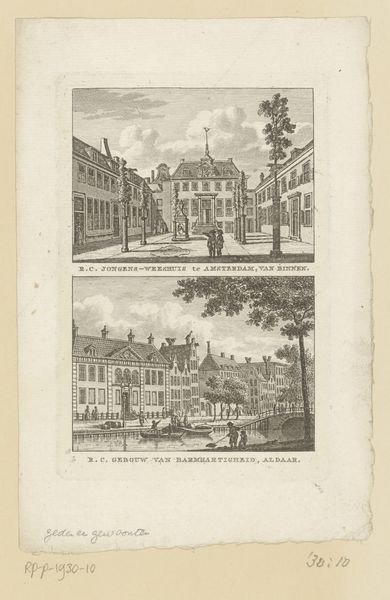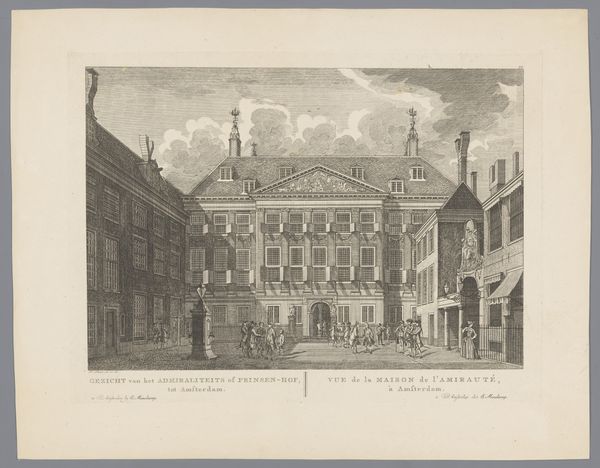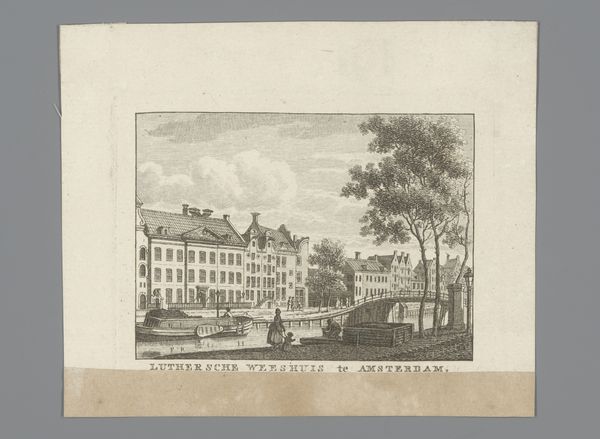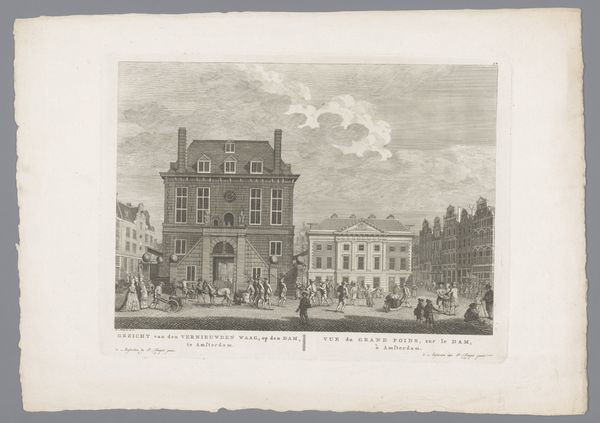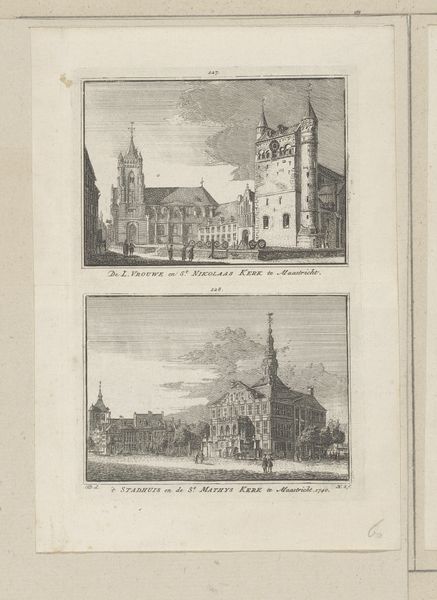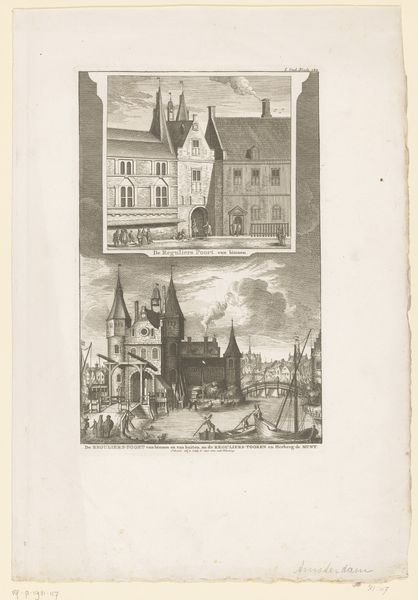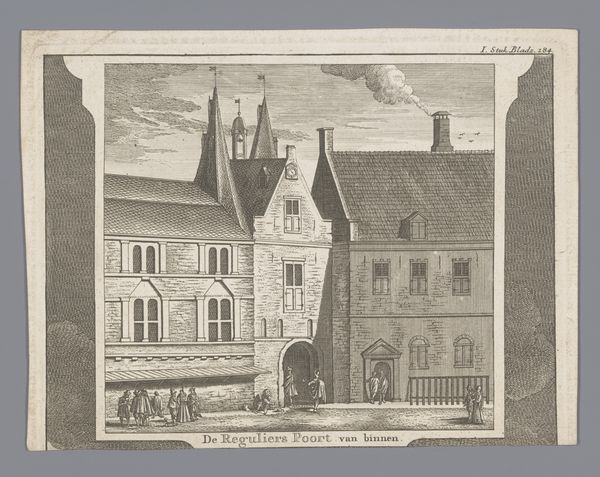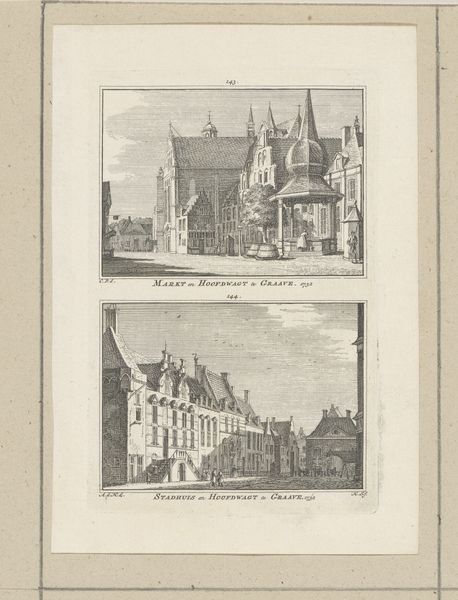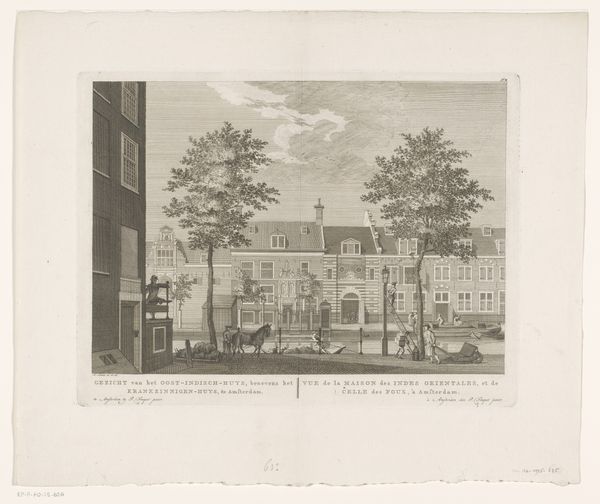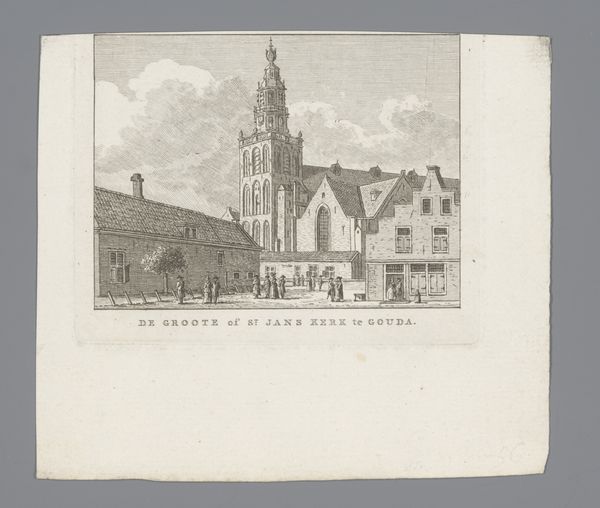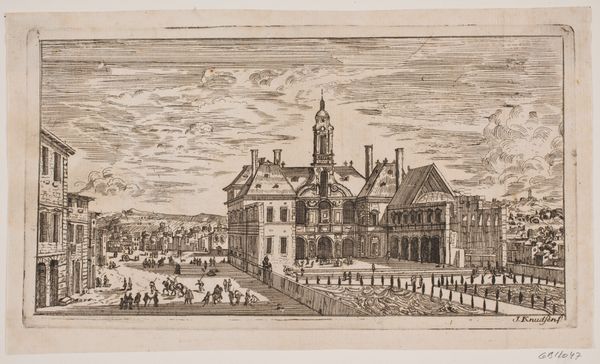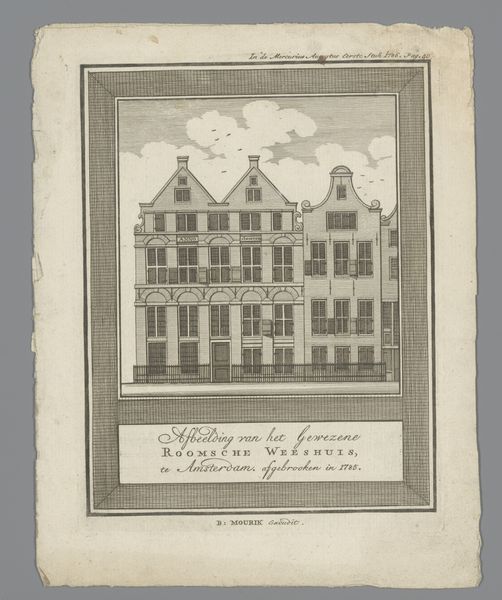
Twee stadsgezichten te Amsterdam met binnenplaats van het Admiraliteitshof of Prinsenhof en het 's Land Zeemagazijn 1786 - 1792
0:00
0:00
print, engraving
#
dutch-golden-age
# print
#
landscape
#
cityscape
#
engraving
Dimensions: height 174 mm, width 114 mm
Copyright: Rijks Museum: Open Domain
Curator: This print, dating from 1786-1792, is titled 'Twee stadsgezichten te Amsterdam met binnenplaats van het Admiraliteitshof of Prinsenhof en het 's Lands Zeemagazijn', created by Carel Frederik (I) Bendorp, now held at the Rijksmuseum. It presents two city views of Amsterdam. Editor: My first impression is one of organized stillness, almost like looking at architectural blueprints, yet with a human touch from the figures scattered throughout. There's a certain sense of order, but the scale seems surprisingly intimate for cityscapes. Curator: Indeed. Observe the carefully hatched lines; the artist employed engraving to render both architectural precision and atmospheric depth, carefully organizing the negative space to create subtle textures in both the structures and the sky. It exemplifies how engravings of the time captured and conveyed information. Editor: The symbolic weight of the buildings themselves—the Admiraliteitshof, the naval warehouse—speaks to Amsterdam's maritime power at the time. These weren't merely buildings, but representations of Dutch authority, trade, and global reach. Do you feel the slight blurring of their depiction hints at the Dutch empire’s dissolving power in the 18th century? Curator: A fascinating interpretation. Focusing purely on formal qualities, the visual composition achieves balance. The two scenes, vertically stacked, allow the viewer's eye to traverse from civic center to industrial port, a dual perspective of the city's heart. Editor: Perhaps those human figures aren't simply picturesque; they are emblematic of Dutch industry in contrast to the architecture as symbols of its governing influence, with that subtle visual link inviting reflections on Dutch identity. Curator: The linear perspective directs us to their relative monumentality within Amsterdam’s urban space. Each stroke conveys intention, and meaning arises in the visual juxtaposition itself. Editor: It is this meticulous balance between iconographic storytelling and the artist’s method which underscores this work. What do you see as the significance for our audience today? Curator: Its precision of line allows us to delve into historical documentation but with a formal beauty of structured artistry. Editor: Agreed. It provides a glimpse of the period’s Dutch society, reminding us of how our cultural memory persists through enduring symbols captured in art.
Comments
No comments
Be the first to comment and join the conversation on the ultimate creative platform.
